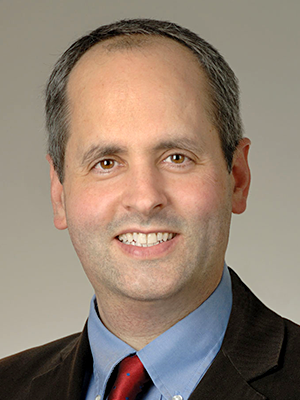The Molecular Mechanics of Eukaryotic Translation Initiation

- Jon Lorsch, PhD, Chief, Laboratory on the Mechanism and Regulation of Protein Synthesis
- Jagpreet Nanda, PhD, Staff Scientist
- Sarah Walker, PhD, Research Fellow
- Fujun Zhou, PhD, Research Fellow
- Colin Aitken, PhD, Postdoctoral Intramural Research Training Award Fellow
- Shardul Kulkarni, PhD, Postdoctoral Intramural Research Training Award Fellow
- Antonio Munoz, BA, Predoctoral Intramural Research Training Award Fellow
- Paul Yourik, BA, Predoctoral Intramural Research Training Award Fellow
The goal of our research group is to elucidate the molecular mechanisms underlying the initiation phase of protein synthesis in eukaryotic organisms. We use the yeast Saccharomyces cerevisiae as a model system and employ a range of approaches—from genetics to biochemistry to structural biology—in collaboration with Alan Hinnebusch's and Tom Dever’s labs here at NICHD and several other research groups around the world.
Eukaryotic translation initiation is a key control point in the regulation of gene expression. It begins when an initiator methionyl tRNA (Met-tRNAi) is loaded onto the small (40S) ribosomal subunit. Met-tRNAi binds to the 40S subunit as a ternary complex (TC) with the GTP–bound form of the initiation factor eIF2. Three other factors, eIF1, eIF1A, and eIF3, also bind to the 40S subunit and promote the loading of the TC. The resulting 43S pre-initiation complex (PIC) is then loaded onto the 5′-end of an mRNA with the aid of eIF3 and the eIF4 group of factors: the RNA helicase eIF4A; the 5′-7-methylguanosine cap-binding protein eIF4E; the scaffolding protein eIF4G; and the 40S subunit– and RNA–binding protein eIF4B. Both eIF4A and eIF4E bind to eIF4G and form the eIF4F complex. Once loaded onto the mRNA, the 43S PIC is thought to scan the mRNA in search of an AUG start codon. The process is ATP–dependent and likely requires multiple RNA helicases, including the DEAD–box protein Ded1p. Recognition of the start site begins with base pairing between the anticodon of tRNAi and the AUG codon. Base pairing then triggers downstream events that commit the PIC to continuing initiation from that point on the mRNA. These events include ejection of eIF1 from its binding site on the 40S subunit, movement of the C-terminal tail (CTT) of eIF1A, and release of phosphate from eIF2, which converts eIF2 to its GDP–bound state. In addition, the initiator tRNA moves from a position that is not fully engaged in the ribosomal P site [termed P(OUT)] to one that is [P(IN)], and the PIC as a whole converts from an open conformation that is conducive to scanning to a closed one that is not. At this stage, eIF2•GDP dissociates from the PIC, and eIF1A and a second GTPase factor, eIF5B, coordinate joining of the large ribosomal subunit to form the 80S initiation complex. In a process that appears to result in conformational reorganization of the complex, eIF5B hydrolyzes GTP and then dissociates along with eIF1A.
Dissecting the molecular mechanics of eukaryotic translation initiation
We made considerable progress this year in our studies of the mechanism of mRNA recruitment to the eukaryotic ribosome and the regulation of start codon recognition.
We analyzed a battery of mutant versions of the large, heteromultimeric translation initiation factor eIF3 for effects on key steps in the initiation pathway in vitro. The studies shed light on the functions of domains of the factor in binding to the ribosomal pre-initiation complex (PIC), enhancement of initiator tRNA binding and mRNA recruitment. In particular, the data indicate that the a subunit of eIF3 plays an important role in stabilizing mRNA binding in the exit channel of the ribosome, while the i and g subunits functionally interact in the entry channel with the cap-binding and RNA helicase complex eIF4F. We are currently starting work on one of two manuscripts describing these studies.
The work described above was significantly aided by the recent cryo-EM reconstructions of two new states of the yeast PIC that we collaborated on with Venki Ramakrishnan’s and Alan Hinnebusch’s groups. The structures, which were recently published in Molecular Cell (Reference 2), show the positions of the eIF3 subunits as well as the beta subunit of eIF2.
We also made significant progress in our studies on the roles of the RNA helicases eIF4A and Ded1 in promoting recruitment of mRNA to the PIC. We found that the two helicases perform distinct functions and that the ATPase activity of eIF4A is stimulated by interaction with components of the PIC. The latter result suggests that eIF4A does not function entirely on the mRNA but may work as part of an initial encounter complex between the PIC and the mRNA.
We also extended our studies of the regulation of the fidelity of start codon recognition using a range of yeast genomic approaches. We identified several kinases that, when knocked out, reduce or abrogate the regulation of start codon fidelity. We also used ribosome profiling to identify instances of regulation of start-codon recognition on specific mRNAs. We are preparing a manuscript describing this novel mode of post-transcriptional gene regulation.
Additional Funding
- Funding is provided via a Memorandum of Understanding (MOU) between NIGMS and NICHD.
Publications
- Mitchell SF, Lorsch JR. Protein affinity purification using intein/chitin binding protein tags. Methods Enzymol 2015; 559:111-125.
- Llácer JL, Hussain T, Marler L, Aitken CE, Thakur A, Lorsch JR, Hinnebusch AG, Ramakrishnan V. Conformational differences between open and closed states of the eukaryotic translation initiation complex. Mol Cell 2015; 59:399-412.
Collaborators
- Thomas Dever, PhD, Program in Cellular Regulation and Metabolism, NICHD, Bethesda, MD
- Alan Hinnebusch, PhD, Program in Cellular Regulation and Metabolism, NICHD, Bethesda, MD
- Nicholas Ingolia, PhD, University of California at Berkeley, Berkeley, CA
- Venkatraman Ramakrishnan, PhD, MRC Laboratory of Molecular Biology, Cambridge, United Kingdom
Contact
For more information, email jon.lorsch@nih.gov.


